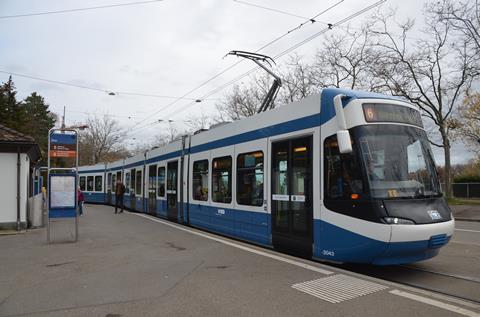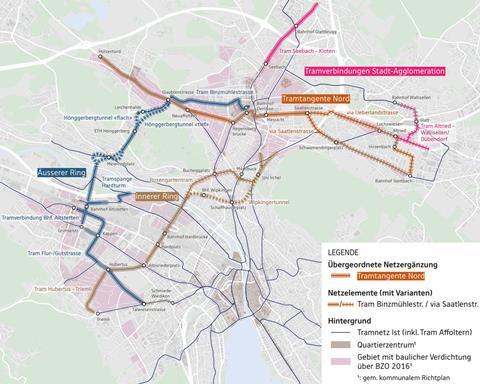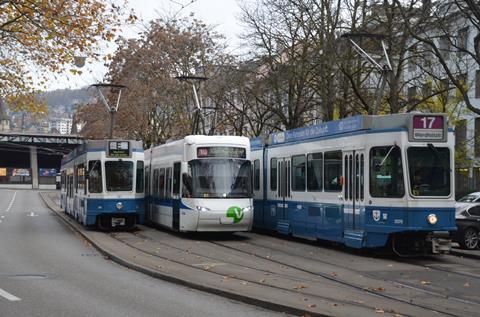
SWITZERLAND: ‘We have to invest today in the mobility of tomorrow’, Zürich councillor Michael Baumer said when city transport operator VBZ presented a network expansion strategy which includes plans to increase the number of passengers by 40% by 2040.
Baumer said major investments in the tram network are needed to accommodate a predicated increase in the city’s population by 100 000 by 2040. There would be 40 000 new jobs, and net zero carbon targets which can only be achieved if as many people as possible use public transport.
The strategy presented on January 23 includes the creation of orbital routes to relieve the city centre and strengthen polycentric development, with Altstetten and Oerlikon emerging as major transport hubs.
This would ‘create the conditions for more efficient city transport, so that we can ensure environmentally friendly and efficient mobility for future generations’, Baumer said.
Three stage expansion plan

The 2040 network development strategy has three stages.
The first includes the 4 km Affoltern tram extension linking Brunnenhof to Holzerhurd in the northwest of the city, which is already part of the 2030 strategy.
VBZ submitted a planning application to the federal transport office BAV in November, and construction is scheduled to start in 2026 for opening at the end of 2029. This would have a capacity of 12 000 passengers/day, a 50% increase on the current trolleybus services.
The first stage also includes the Tramtangent Nord, which, according to VBZ director Marco Lüthi, would give an impetus to urban development and support polycentric development in Oerlikon.
It comprises two sections of tramway to connect existing or planned routes. The 1·2 km western section would connect Neuaffoltern on the Affoltern extension with Regensbergbrücke on the existing route to Oerlikon. There are two options under consideration for the eastern section: a 1·5 km link between Messe/Hallenstadion and Saatlenstrasse through a Schwamendingen tunnel, or a combination of two connections between Messe/Hallenstadion and Luchswiesen (2·9 km) and between Hirzenbach and Stettbach (0·9 km).
There are various options for extensions to Wallisellen or Dübendorf to improve connections between the city and the surrounding area.
A second track would also be provided at the Rehalp loop, and capacity increased at the Hemetschloo loop.
Underground orbital lines

The second stage of the 2040 programme focuses on the development of a partly-underground inner orbital connections using a proposed Wipkinger tunnel.
This would relieve overloaded city centre tram and bus services, provide more operational flexibility and offer direct connections from the Zürich West development to the northern districts. Possible routes are now being assessed
The third stage proposed for the 2050s would be the development of an outer ring using a proposed Hönggerberg tunnel to connect the growing Oerlikon and Altstetten districts as well as Stettbach and Enge railway stations.
In the northern part of the network, an extension from Seebach to Kloten is also planned.
The cost of all three stages is estimated at SFr1·9bn to SFr2·5bn, with the tunnels costing SFr1·4bn to SFr1·8bn. This does not include the costs for the Affoltern extension.
Baumer said the costs would be spread over 25 to 30 years, and the programme would therefore cost ‘less than SFr100m per year’ which would be shared by the canton, the city and the federal government.



